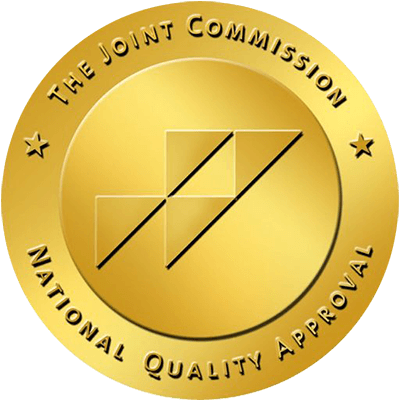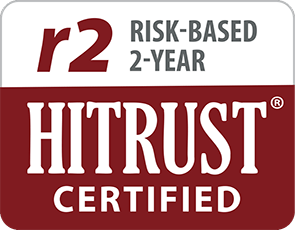Written by Ashley Kane,
Brightside Health
8 Minute Read

Medically reviewed by:
Mimi Winsberg, MD
Chief Medical Officer
10 Minute Read
Those prescribing antidepressants often fail to find the right treatment, missing the opportunity to actually help patients.
Over the past 30 years or so, the U.S. healthcare system has taken a one-size-fits-all treatment approach with antidepressants. In most cases, primary care doctors prescribe from a short list of 1-3 widely used medications, then provide minimal oversight throughout treatment.
This runs counter to psychiatric practice and emerging evidence around the opportunity to deliver better outcomes by using evidence and data to match each patient with the specific medication(s) most likely to help them, then monitoring closely and adjusting until it’s just right.
Why does this matter? Nearly 13% of Americans take antidepressant medication. Because we are treating them with a one-size-fits-all approach, millions of them are likely on a suboptimal treatment plan, benefitting from it far less than they should. Millions of others have likely stopped treatment altogether, due to side effects, lack of response, or both.
New approaches that blend evidence-based psychiatry with technology, data, and machine learning are making expert care available to everyone, not just those who can see the best psychiatrists. The result is more rapid symptom reduction and milder side effects, leading to better treatment adherence and outcomes.
In short, we can make antidepressants more effective.
Want to speak 1:1 with an expert about your anxiety & depression?
Depression should be treated by experts, not generalists
Depression is complicated. It’s not one thing, but a diverse condition with over 250 distinct manifestations, symptom clusters, and subtypes. These different subtypes each have attributes that respond differently to medications based on varied mechanisms of action. Identifying the right treatment to address an individual’s unique experience of depression can significantly improve their outcome.
Given this complexity, it’s common for people to picture expert psychiatrists delivering care to depression patients in need. But the reality is that primary care physicians (PCPs) treat the vast majority of depression cases and prescribe more than 80% of antidepressant medication.
And while a skilled psychiatrist might consider more than 30 different medications and over 300 different medication/dose combinations for a given patient, PCPs tend to prescribe from a short list of 1-3 widely used antidepressants for everyone.
PCPs provide a lot of value to our healthcare system. But, the structure of primary care does not set them up to succeed at depression care. They tend to have short visits and must be prepared to handle a high volume of extremely diverse cases. It’s unrealistic for them to keep up with the knowledge a psychiatrist maintains about effective diagnosis and use of antidepressant medication. So, they tend to stick with a comfortable shortlist.
Primary care also lacks the tools and resources necessary to effectively monitor, measure, and adjust care over time. Over half of patients end up needing at least one treatment adjustment, and about one third require multiple medications concurrently. This process requires frequently measuring progress during treatment to support effective clinical decision-making. Only a tiny fraction of primary care clinics practice this type of measurement-based care for the treatment of depression.
The results of our healthcare system’s one-size-fits-all approach show that only about 40% of people getting treatment for depression receive even “minimally adequate care.”
The promise of technology-enabled prescribing
With 250+ different depression manifestations and 300+ different medication and dose combinations, choosing which is most likely to work for a given patient is a huge challenge. It’s a complex matching problem that humans aren’t very good at because there are too many factors to consider.
Fortunately, technology is really good at solving this type of data challenge. By using machine learning to support antidepressant prescribing, we can gather attributes about each patient, identify clusters and patterns across all patients, and match these subtypes to the specific treatment that is most likely to help them.
A 2016 Yale study proved the feasibility of this approach. By applying machine learning to data about participants in a clinical trial, they doubled the accuracy of predicting whether each person would respond to a given treatment.
This evidence validates what psychiatrists have known all along: effective use of antidepressants requires matching a patient’s specific attributes to the medication profile most suited to help them. But even the best psychiatrists are unable to take every piece of information into account.
By using technology to gather relevant data, evaluate it against clinical research and guidelines, and suggest the best treatment for each patient, we can help every provider make informed and sophisticated prescribing decisions, leading to better outcomes.
Telemedicine makes it work better.
To be successful, clinical decision support systems depend on a number of other factors. They require the capture of specific clinical and patient-reported data, integration with electronic medical records, and specific processes and workflows. With the slow pace of change in traditional healthcare, it’s not surprising systems like this aren’t in use today.
Telemedicine offers a simpler alternative. When a patient is already engaged with technology, it makes it easier to capture the input data you need for clinical decision support (as opposed to a patient filling out a paper form while sitting in the waiting room at a doctor’s office), to display the result in a linked electronic medical record, and to deliver it within a custom physician workflow.
In addition to helping overcome stigmas and other barriers to care, telemedicine also makes it easier for the patient and physician to keep in touch over time. Features like remote monitoring and messaging have the potential to change the relationship between the patient and physician—from a brief face to face encounter every few weeks or months, to a continuous pattern of monitoring and communication. This better matches the needs of treating a chronic, complex condition like depression.
Over half of people with depression never get care. We can improve both access and quality by using telemedicine, technology-enabled prescribing, and measurement-based care together.
Millions of lives are at stake.
13% of Americans take antidepressant medication – that’s more than 30 million people.
Because of the mismatch between patient needs and care delivery, we estimate that more than 10 million people are on the wrong antidepressant treatment plan. These people are missing the opportunity to receive a more targeted treatment that can deliver better outcomes.
Millions of other people are likely struggling with ongoing depression because they stopped treatment that was ineffective or had intolerable side effects due to untargeted prescribing and lack of treatment oversight.
Unfortunately, depression is only getting worse. At least 1 in 5 people likely to get depression in their lifetime, and the suicide rate has increased over 30% in the past 20 years. This is a crisis that touches everyone.
Our broken system needs change and needs it fast. Fortunately, new tools and approaches offer a clear path forward to deliver effective care to everyone who needs it. Soon, online depression care will be the norm, and we’ll deliver the care people deserve.
We’ve created a better way
For years, we’ve lived with this problem because we didn’t have a good way to solve the psychiatrist shortage.
Everyone with depression should get specialized, expert care. This includes an experienced clinician taking the time to complete a comprehensive diagnostic evaluation, using data and clinical decision support to make an informed prescribing decision (if medication is appropriate), and practicing measurement-based care to monitor progress and adjust treatment accordingly. It also includes providing comprehensive treatment support, with evidence-based therapy and lifestyle resources. We built Brightside to deliver this quality of care to everyone who needs it.
Here’s how it works:
- After a quick online assessment, Brightside evaluates more than 100 unique data points about its members and compares them against a vast body of research around antidepressants and clinical care to recommend a treatment plan most likely to work for them.
- Each member is then connected with a Brightside doctor who specializes in the type of care they need. They use this data to craft a personalized treatment plan that includes medication delivered each month.
- The doctor closely monitors and tracks the member’s progress, so any necessary medication and treatment adjustments can be made until it’s just right. Progress is evaluated on average 6X more often than traditional care, all from the comfort of home.
- Members choose to complete self-paced therapy lessons or work with a licensed Brightside Therapist to complete a personalized program based on approaches that are proven to work.
Brightside doctors have prescribed over 330 different medication/dose combinations, highlighting the personalized care being delivered to every patient. And it’s working.
- 83% of Brightside members have a clinically significant symptom reduction within 12 weeks.
- Over 80% of our members begin treatment with moderately severe or severe depression and after 12 weeks 60% of members achieve sub-clinical or remission-level symptoms.
- Over 50% of Brightside members indicate that they have suicidal ideation at intake, while just 15% do after 12 weeks.
And the best part: the system keeps learning from itself. It will continue to get smarter and smarter to optimize treatment for every Brightside member.
The result is that Brightside can help more people get on the right treatment faster, leading to better outcomes. The days of one-size-fits-all prescribing are over. Better depression care is here.
Sources
https://memlab.yale.edu/sites/default/files/files/2016_Chekroud_etal_Lancet(1).pdf
https://www.sciencedaily.com/releases/2016/10/161024131122.htm
https://journals.sagepub.com/doi/abs/10.1177/0963721414568342
https://www.ncbi.nlm.nih.gov/pmc/articles/PMC3188778/
https://www.ncbi.nlm.nih.gov/pubmed/17320312
https://jamanetwork.com/journals/jamapsychiatry/fullarticle/210536
https://www.mayoclinic.org/tests-procedures/cyp450-test/about/pac-20393711














